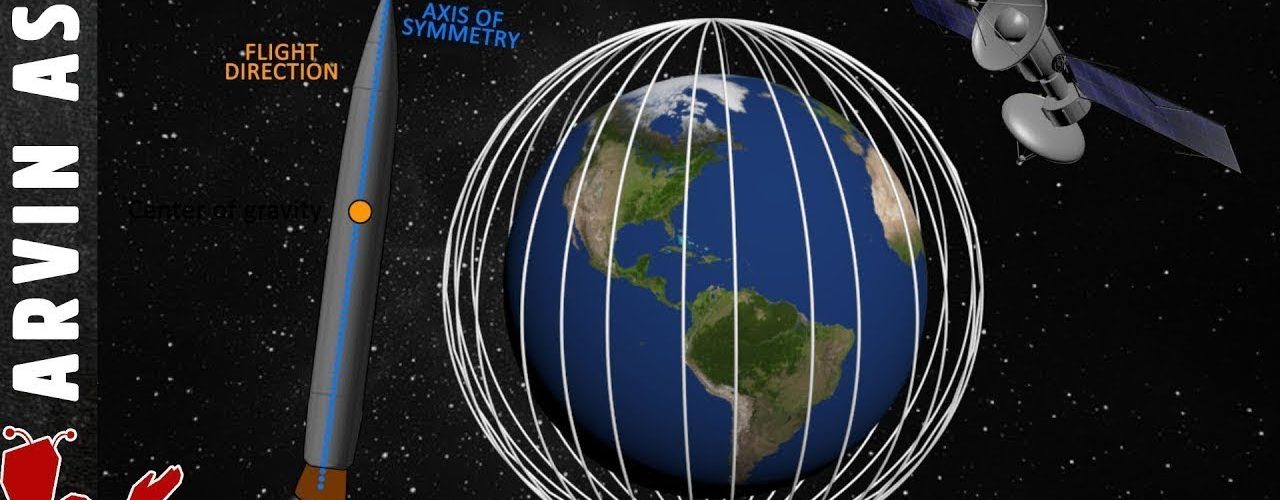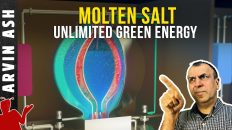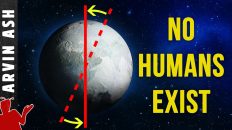How many times have you heard someone describe a difficult concept as “it’s not rocket science” – meaning it’s not as difficult to understand as rocket science is. Rocket science is synonymous with difficult subject.
Wouldn’t it be nice to be able to say something like, well I actually know rocket science and I think this is more difficult than rocket science.
After watching today’s video, I think you may very well have the background to be able to say just that, because I’m going to show you how communications satellites work, and how they are launched into orbit.
Although there are several different types of satellites, these types are the ones that probably have the biggest impact in our daily lives.
But to understand what these things do and how they are launched, you’re going to have to learn something about…you got it, rocket science. And I’m hoping you’ll find that it’s really not as hard as it’s cracked up to be.
If you’ve ever used a GPS app to find directions, or if you have looked up the weather for your town, or watched a live TV broadcast from a foreign country – you have interacted with a satellite. Satellites affect our daily lives.
There are almost 3000 operational satellites, owned by over 100 different countries orbiting the earth right now. And thousands more are planned for the future. About 550 of these are in what’s called geo stationary orbits.
Communications satellites are typically in such orbits. What this means is that, the satellite appears stationary compared to the rotation of the earth. It stays in the same point in the sky at all times. In other words, you can leave your satellite dish that receives your favorite TV shows in one position, and never have to change it.
So the question is how do scientists calculate where to put the satellite so that it remains at the same point in space? Orbital mechanics is rooted in Keppler’s laws of planetary motion, published way back in 1609. Newton’s laws of universal gravitation, published in the Principia Mathematica around 1687 also plays a role in many calculations.
Keppler’s laws allow us to calculate the period and speed of such a satellite.
Speed = S = sq root(mu/r) mu= standard gravitational parameter
Period = T = 2pi*sq root(r^3/mu)
r = radius of orbit = altitude + radius of earth
mu = Newton’s universal gravitational constant x mass of planet
Speed is the square root of mu over r, where mu is the standard gravitational parameter, equal to the Newtont’s gravitational constant times the mass of the planet, r is the radius of the satellite from the center of the earth.
And the period has the following formula. Note that the speed and period only depends on the radius of the satellite, and not on its mass.
A geo stationary orbit is circular, and since it’s altitude does not change, its speed must be constant.
If you do the calculations, you will see that a geostationary orbit is 35,786 km from the equator. The orbital period is 23.93 hours, or 23 hours 56 minutes. You might say, why isn’t It exactly 24 hours? Well, 23 hours and 56 minutes is actually equal to one sidereal day. This is the time it actually takes for the earth to complete one rotation with respect to a non-rotating frame of reference.
The reason we normally count 24 hours as being one day, is because 24 hours is the precise time the sun is at the same spot in the sky every day. But you have to keep in mind that the earth moves with respect to the sun. The earth moves 1/365th of the arc around the sun during this time. That’s about 4 minutes. In other words, the earth has to rotate just a little bit more about 4 minutes, before the sun is directly overhead. But one full rotation around its axis is 4 minutes less than that.
Now the question is how is a communications satellite inserted into such an orbit. The first step in this process is to launch the satellite on a rocket that has the payload capacity to carry the satellite to this orbit and can impart the speed necessary to maintain this orbit.
In the United States, with the retirement of the space shuttle, one such rocket that transports satellites is the Atlas V rocket.
The main engine of the Atlas V rocket is powered by one Russian RD-180 main engine burning 627,105 lb (284,450 kg) of liquid oxygen and RP-1 – which is a highly refined form of kerosene, similar to jet fuel. It also uses up to 5 solid rocket boosters for additional thrust during launch.
The main engines are operated in 2 stages, so it is like two rockets stacked on top of each other. After the first stage uses up most of it’s fuel, it is jettisoned, making the rocket a little lighter, so the 2nd rocket can accelerate the payload further and take the satellite up into its orbit.
Rocket engines are an application of Newton’s third law, for every action, there is an equal and opposite reaction. The combustion of fuel causes high pressure exhaust gases to be expelled at supersonic speed. The rearward acceleration of the mass of the fuel leaving the rocket nozzle causes the equal and opposite reaction of forward thrust powering the rocket forward or upward during launch.
The shape of the nozzle of the rocket is designed to increase the velocity of the exhaust gases further to increase its thrust. Subsonic flow is converted to a supersonic flow.
A geosynchronous orbit is achieved in stages. Typically, the rocket takes the satellite on its orbital altitude, the orbit is elliptical. This elliptical orbit has to be changed to a circular orbit to become geostationary.
The laws of physics are such that the satellite continues on an elliptical orbit until something changes its orbit. This change is done by accelerating the rocket at precisely the right time during its trajectory so that it forms a more and more circular orbit with every pass around the earth.
As you can probably surmise, there is only one geostationary orbit and it is at 35,786 km above the earth’s equator. There is no other geostationary orbit. And there are 500 satellites at that precise altitude. This real estate, even in space is limited. The total perimeter available is about 265,000 km. This wouldn’t be a problem if each of the 500 satellites were placed equal distance apart, but that’s not the way the world works. There are many more satellites above the most developed regions of the earth. So real estate here at this perimeter is a prized commodity. This space real estate is tightly controlled by an organization called, the international telecommunications union (ITU) which assigns each satellite a slot at this perimeter.
It is not enough for the launch rocket to place the satellite in a geostationary orbit. It must place it precisely at the slot that it is assigned by the ITU. In addition, unless the rocket is launched from somewhere in the equator, it will have a in relation to the equator, so this has to also be adjusted to match the of the equator.
So for example, when satellites are launched from Cape Canaveral, it will be degrees off the path of the equator. This has to be adjusted. It is beneficial therefore for countries to launch their rockets as close to the equator as possible so that less rocket fuel is needed to make this adjustment. In addition, launching from close to the equator gives the rocket added momentum because of earth’s greater speed of spin near the equator.
Note that not all communications satellites are place in geostationary orbits.
So what happens now, that we finally have our satellite in orbit around the earth. We have adjusted to make it a circular geostationary orbit. We have placed it in the correct slot assigned by the ITU. And we have adjusted it so that it is directly over the equator?
The first thing that happens is that solar panels are deployed so that the satellite can have power to function. The satellite usually has at least two antennas.
So the next time you watch satellite TV, or use your GPS app, listened to SiriusXM radio, or checked the weather, think about the rocket science and the incredible technology that goes into allowing us privilege to enjoy these useful and practical technologies.







